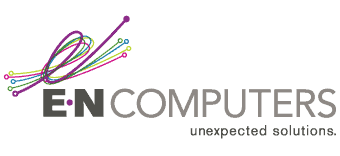
 by Scott Jack
by Scott Jack
Content Contributor, E-N Computers
Over 10 years of experience in healthcare IT and tech support.
When you look at IT managed service providers (MSPs), you’ll find that many of them offer plans for both fully managed IT and co-managed IT. With a fully managed IT plan, the MSP handles all aspects of your IT environment.
With co-managed IT, responsibility for your IT environment is shared between your own staff and an MSP. This may look different depending on your company size, structure, and industry. But there are certain internal roles we find collaborate best with us as an MSP.
We will introduce three roles that are best suited to a successful co-managed IT partnership. We’ll provide a brief overview of each role, explain why they’re a good fit, and how you can find the right person for the role. We also provide sample job descriptions to help you when you’re looking to hire for one of these roles.
The three roles are:
- Business Analyst
- Technology Coordinator
- Desktop Support Technician
QUICK ANSWER:
Which staff roles should coordinate with an MSP?
In our experience, the three roles best suited to coordinate with a co-managed IT service provider are: business analyst, technology coordinator, or desktop support technician.
But first, why should — or shouldn’t — you consider co-managed IT? Here is a quick overview of the benefits and drawbacks.
Benefits: Co-managed IT provides you with a larger and more experienced team at a lower cost than building an in-house IT department. It also can offer better continuity of support than you would get with a one or two-person IT team, since we will keep complete and current documentation on your systems. (See more benefits of managed IT services.)
Drawbacks: When you work with an IT vendor, even in a co-managed IT arrangement, you lose some control over your IT systems and processes. We have a clear service level agreement with each client, but this means some non-urgent issues might be responded to more slowly than you’re accustomed to. (See more drawbacks of outsourcing IT.)
With that covered, here are three roles that work well with co-managed IT.
Get the Job Descriptions

Hiring good IT personnel isn’t easy. We’ve found three roles work well with a co-managed IT service plan. And we’ve created sample job descriptions to help you find the right people for the job.
Don’t have time for the job descriptions right now? Enter your email address (totally optional!) and we’ll send you a link so you can download them later or share them with your team.
Business Analyst
Average Salary: $80,000
Job Description: Business analysts collect and evaluate data about your business to identify problems, opportunities, and trends. They also keep an eye on projects and processes. They look for ways to improve data collection, reporting, processes, and systems. This includes looking for ways to effectively use technology.
How to Fill This Role
Successful business analysts are critical thinkers, problem solvers, and communicators. Rather than wait for information to be handed to them, they are resourceful and eager to find the information they need. They know who is most likely to have answers to the questions and are willing to approach them directly to get those answers. They are also able to bridge the communication gap between technologists and business people.
You may already have a business analyst waiting to be found in your organization. They often come from a managerial or IT background. Often, they’re eager to understand ‘the other side’; in other words, they’re a tech savvy manager or a business-minded technologist. Either way, they want to develop a holistic understanding of how the business functions and are naturally inclined to look for ways to streamline operations.
Why They Are a Good Fit
A common challenge in business is that managers and IT people don’t speak each other’s language or understand one another. Someone with the skills and aptitudes mentioned above can bridge the communication gap. They also have a good grasp of how different parts of the business interact with each other. With the backing of organization leadership, they can be a powerful force for pushing forward a unified business-IT strategy.
Because of their deep understanding of business and technological realities, we think business analysts make an ideal internal point of contact. Because they are embedded in your organization, a business analyst can build good rapport with other members of your team and keep a pulse on what works, what doesn’t, and where technology might improve worker and customer experience. We love collaborating with someone with that kind of insight because it produces some of the best results. (See Should I Hire an IT Support Manager or a Business Analyst?)
Technology Coordinator
Average Salary: $70,000
Job Description: The technology coordinator is a paraprofessional position in schools that manages the installation, troubleshooting, maintenance, and support of computer and network systems. A technology coordinator has a wide range of responsibilities including day-to-day support; developing a technology roadmap and budget; coordinating technology projects; communicating with administrators, faculty, and vendors; and acting as a technical consultant for educators.
How to Fill This Role
Technology coordinators must have a strong grasp of both technology and education. They need to be strong verbal and written communicators that can convey ideas in a way best suited to their audience. They may have a certificate in education technology from a state agency, but this is not strictly necessary and may depend on the requirements of the school district or state they are working in. Generally, they are required to have a bachelor’s degree and have worked their way through IT roles such as desktop support and systems administration. (See How to Hire an IT Specialist.)
Why They Are a Good Fit
To be most effective, technology coordinators will benefit from a large, experienced team. The coordinator will work closely with administrators, faculty, and staff to understand needs, provide support, and communicate changes. Co-managed IT perfectly complements their role by providing second tier help desk support, hardware and software inventory, network maintenance, project planning and implementation, strategic planning, and budget guidance.
Desktop Support Technician
Average Salary: $50,000
Job Description: Desktop support technicians provide staff with day-to-day support and training. They can install hardware and software, perform basic troubleshooting, perform network connectivity tests, and resolve most common issues. They document error messages, research, and attempts they’ve made to contact users and resolve problems. When they are unable to resolve an issue, they escalate it to a higher support tier in a timely manner.
How to Fill This Role
Desktop support is often an entry-level position that can be successfully carried out by a person with natural technical aptitude and skills including problem-solving, communication, and relationship building. Some businesses prefer technicians with certifications that demonstrate basic understanding of technical concepts, such as CompTIA A+ and Network+ certifications.
Why They Are a Good Fit
Desktop support technicians are a good fit because they can provide full-time on-site support to end users while an MSP takes care of all Tier 2 support, strategy, budgeting, networking, procurement, and other behind-the-scenes work. While performing initial troubleshooting and resolution, they can gather complete information and submit it to the MSP so that resolutions can be reached more quickly.
Other Roles That Might Work With an MSP
Audio/Video. In facilities with conference rooms or where audio/video presentations are common, an MSP will work closely with an audio/video technician to make sure computers, peripherals, and network connections are working. We will also perform initial setup and troubleshooting of conference phones.
Facilities. When working on a project such as installation or upgrade of network, phone, or security equipment, an MSP may need to coordinate with outside vendors (e.g. electricians and internet providers) as well as a facilities manager to make sure all necessary areas can be accessed, and work is done in a way that does not compromise the integrity of the facility.
Accountant. A full-service MSP like ENC can plan out a technology roadmap and budget. They may work with your accountant to determine the budget, explain line items, and assist with prioritization.
Office Managers and Administrative Assistants. Office managers and administrative assistants are responsible for keeping all staff in the office working. They are alert to common pain points and are an excellent point of contact when looking to improve processes.
Reach IT Maturity
When you have the right people working together, you can implement systems and processes that actively help you reach your business goals. We sometimes call this IT maturity. But for many organizations, something is off when it comes to their partnerships, strategy, systems, and settings. How can you know what’s working well and where you have room for improvement? Start by taking our free IT Maturity Self-Assessment. You’ll walk away with some pointers and, if you want, a free appointment to discuss your results.
Take the IT Maturity Assessment

Is your business ready to weather changes, including employee turnover? Find out by taking our IT maturity assessment.
You’ll get personalized action items that you can use to make improvements right away. Plus, you’ll have the opportunity to book a FREE IT strategy session to get even more insights into your IT needs.

Industries
Locations
Waynesboro, VA
Corporate HQ
215 Fifth St.
Waynesboro, VA 22980
Sales: 540-217-6261
Service: 540-885-3129
Accounting: 540-217-6260
Fax: 703-935-2665
Washington D.C.
1126 11th ST. NW
Suite 603
Washington, DC 20001-4366
Sales: 202-888-2770
Service: 866-692-9082
VA DCJS # 11-6604
Locations
Harrisonburg, VA
45 Newman Ave.
Harrisonburg, VA 22801
Sales: 540-569-3465
Service: 866-692-9082
Richmond, VA
3026A W. Cary St.
Richmond, VA 23221
Sales: 804-729-8835
Service: 866-692-9082
